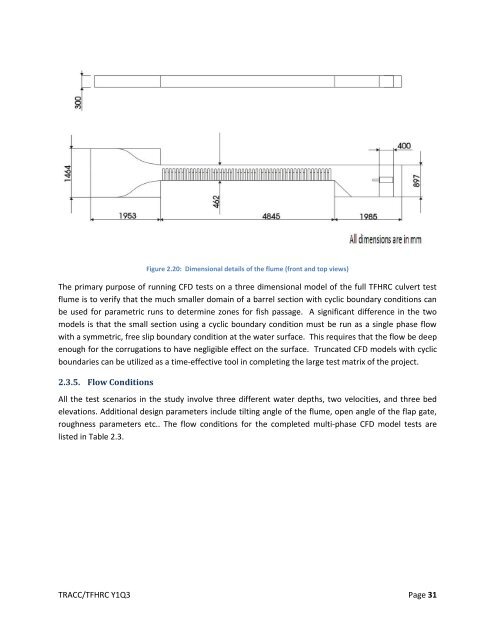Computational Mechanics Research and Support for Aerodynamics ...
Computational Mechanics Research and Support for Aerodynamics ...
Computational Mechanics Research and Support for Aerodynamics ...
Create successful ePaper yourself
Turn your PDF publications into a flip-book with our unique Google optimized e-Paper software.
Figure 2.20: Dimensional details of the flume (front <strong>and</strong> top views)<br />
The primary purpose of running CFD tests on a three dimensional model of the full TFHRC culvert test<br />
flume is to verify that the much smaller domain of a barrel section with cyclic boundary conditions can<br />
be used <strong>for</strong> parametric runs to determine zones <strong>for</strong> fish passage. A significant difference in the two<br />
models is that the small section using a cyclic boundary condition must be run as a single phase flow<br />
with a symmetric, free slip boundary condition at the water surface. This requires that the flow be deep<br />
enough <strong>for</strong> the corrugations to have negligible effect on the surface. Truncated CFD models with cyclic<br />
boundaries can be utilized as a time-effective tool in completing the large test matrix of the project.<br />
2.3.5. Flow Conditions<br />
All the test scenarios in the study involve three different water depths, two velocities, <strong>and</strong> three bed<br />
elevations. Additional design parameters include tilting angle of the flume, open angle of the flap gate,<br />
roughness parameters etc.. The flow conditions <strong>for</strong> the completed multi-phase CFD model tests are<br />
listed in Table 2.3.<br />
TRACC/TFHRC Y1Q3 Page 31

















